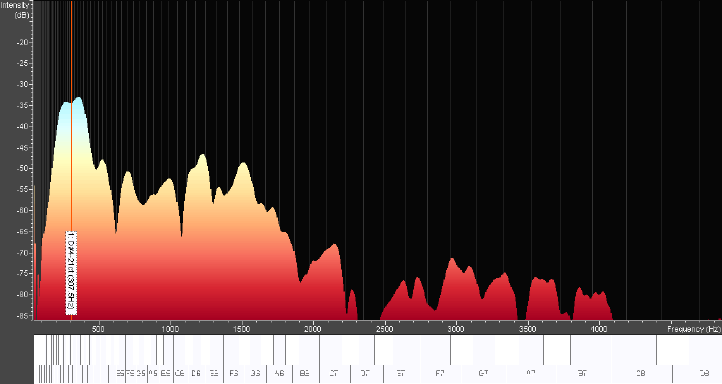GTX151756
{note: the top plate is also known as the 'belly' of the instrument.}
...This the current state of my understanding of plate frequencies. In another article I explain how to adjust a plate which has an uneven tone.
... I hope this information is helpful. Please feel invited to share your experiences in this area, or ask questions by e-mail.
...This is the sound specturm from a tap on one plate of a recent violin, and will serve as an example of what a tap tone is composed of and what we are to listen for:
...On the left is sound level in Db; on the bottom you see the frequencies generated by a tap in the center of the top plate of my Opus #22 violin. The first prominent sound peak is the 'fundamental tap tone' that we are to listening for. However, our wonderfully designed ears (brain, nerves, etc.) hear all these generated sound frequencies at once. The highest pitches (in this case 4,000 hertz, vibrations per second) is the easiest for your ears to hear, as our hearing is more sensitive to high frequency sound. However, the 'fundament' tap tone is the first major peak (in this case about 322HZ) in the sound envelope; this is the tap tone frequency, that we want to hear and compare.
...For most of the fittings on a violin, the back plate fundamental tap tone seems to be the best goal frequency for a fine sounding instrument. {I try to use 353HZ for the back plate when I can.}
(revised 9/2017)
Page AA_22



